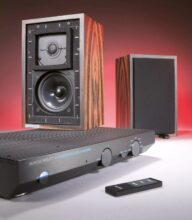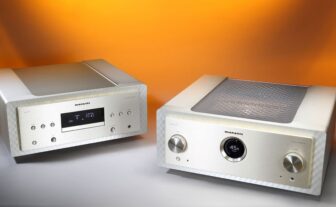ARCAM Radia A25 Integrated Amplifier Review
The Arcam Radia A25 is an integrated amplifier with no frills or embellishments, but everything important is in place.
British company Arcam Audio (originally Amplification & Recording Cambridge) has been building hi-fi since 1976. Today, the company is part of the Harman group, which is owned by Samsung, but all development and design still take place in Cambridge, England.
The Arcam Radia A25 is the largest integrated stereo amplifier in the new Radia series, which Arcam launched last fall. Common to all Radia models is a new design with striking yellow contrast stripes on the sides and around the buttons. These yellow lines, in a completely newly designed color, hardly have any impact on the sound – although Arcam emphasized them greatly during the presentation…
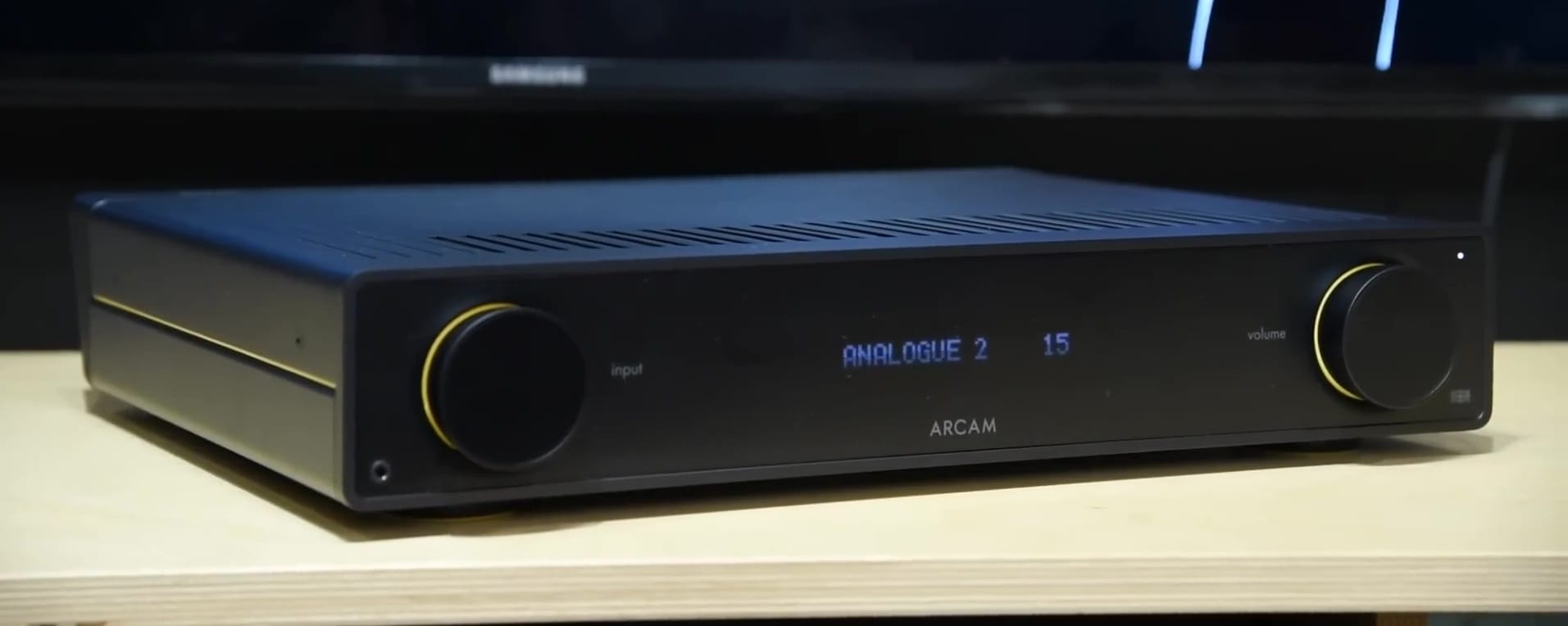
Build & design quality
Aside from the yellow stripes, the Arcam Radia A25 is a very minimalist amplifier in a pitch-black metal casing. The case feels unusually solid and almost industrial. The matte black front is adorned with two knobs for controlling the source and volume. A large white dot matrix display shows the settings. The display is completely invisible when the amplifier is off – and almost invisible when it’s on.
On the back, you’ll find a reasonable selection of inputs: three analog line inputs, an RIAA input for turntables with an MM cartridge, and three digital inputs for transmission via coaxial, optical, and USB-C. The latter is intended for playback from computers, where the A25 functions as an external sound card.
The speaker terminals feature high-quality banana connectors. There are also in-and outputs for remote control.
Music can be streamed wirelessly from a mobile phone via Bluetooth. Since the Bluetooth receiver supports AptX Adaptive, you can get decent – though not lossless – quality.
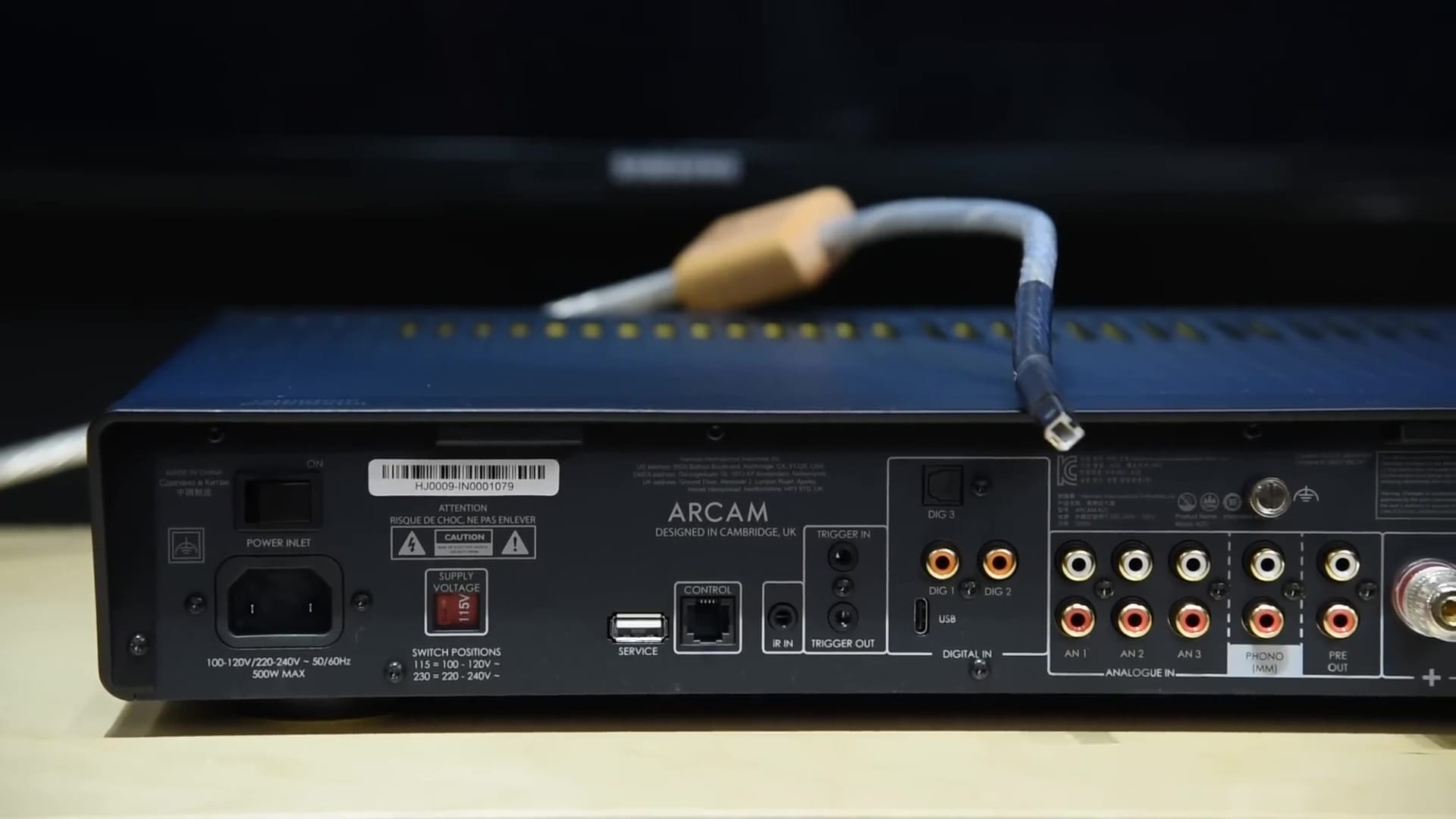
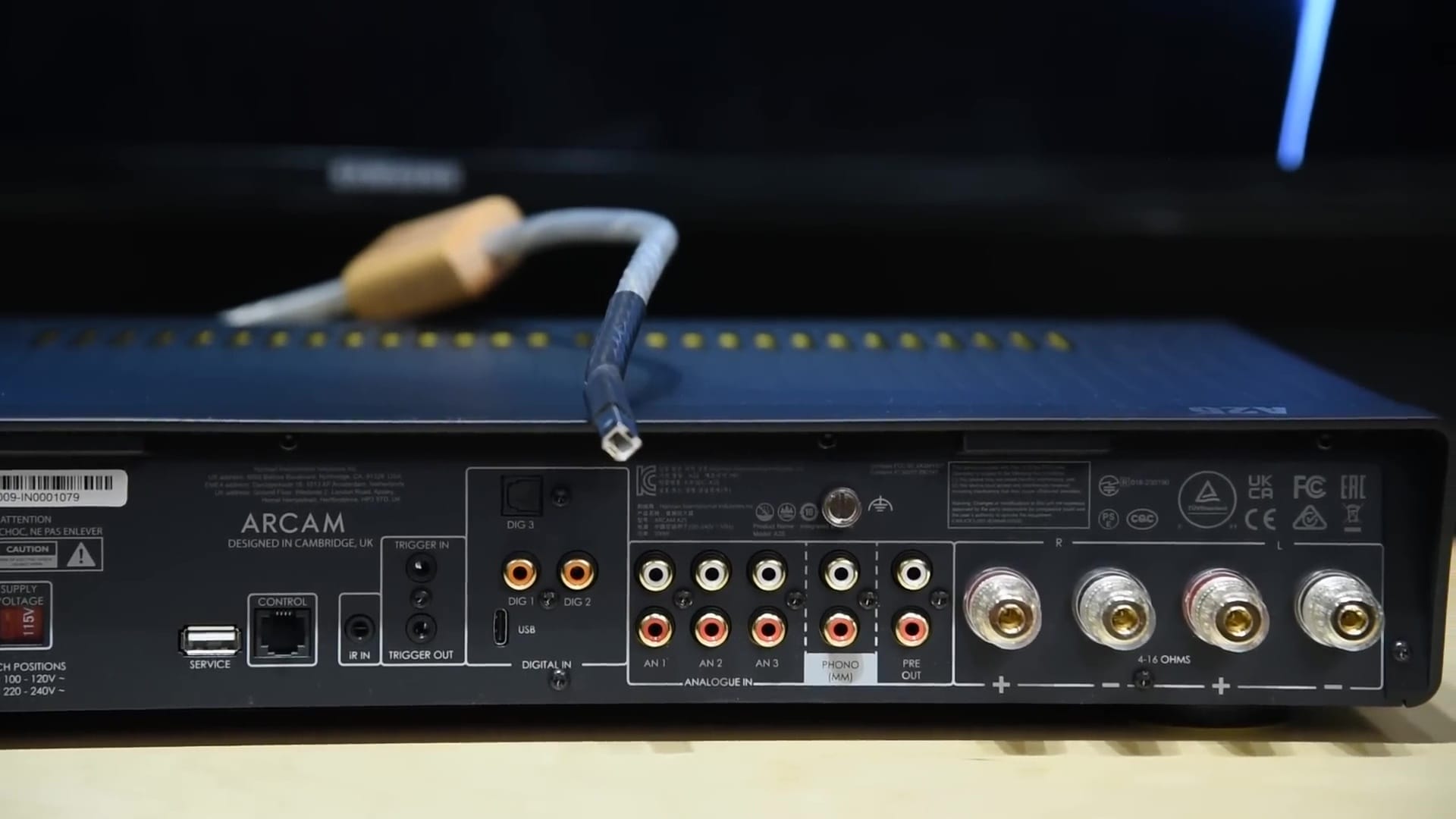
The back has pretty much all the inputs and outputs you could want. A beveled edge hides the cables a bit – but also makes it tricky to find the right input when plugging in. However, you’ll search in vain for any form of network or streaming option. This is a pure stereo amplifier and not a computer packed into an amplifier casing. However, Arcam does have a streamer, ST5, and a CD player, CD5, in the same series.
The Arcam Radia A25 is quite heavy for such a compact amplifier. The solid steel casing adds a couple of kilos, but the internal components also weigh quite a bit. A peek under the hood is definitely confidence-inspiring. There, you’ll find a solid toroidal transformer in the power supply and separate output transistors on a hefty heat sink.
WHAT IS CLASS G?
Most hi-fi amplifiers operate in either Class AB or Class D. A few operate in Class A. But the Arcam Radia A25 is a Class G amplifier.
The electronics look reliable: A large toroidal transformer and a substantial heat sink. For those unfamiliar with amplifier classes (I had to look it up too), a Class G amplifier is essentially a hybrid Class A amplifier with a couple of tricks to improve efficiency.
The advantage of Class A amplifiers is that they avoid the crossover distortion that occurs when two output transistors take turns handling each half of the signal. This can sound heavenly, but a Class A amplifier is incredibly inefficient, easily drawing 100 watts of power to deliver an output of 2 x 10 watts.
To build a Class A amplifier with higher power output, you need a powerful power supply and large heat sinks to dissipate hundreds of watts as heat. And that’s expensive.
The trick with a Class G amplifier is that the power supply has two different voltages. At low output levels, the output stage only gets low voltage, allowing it to operate in Class A and deliver a few watts without overheating. At signal peaks, it switches to a higher voltage so the amplifier can deliver full power. The Arcam Radia A25 is rated to deliver 100 watts per channel into an 8-ohm load and 165 watts into 4 ohms.
Many have promised the fine sound of Class A amplifiers without the cost of massive power losses. And the history of hi-fi is full of special amplifier classes that aim to deliver on this promise. Whether it holds true this time will be determined by listening tests.
HOW DOES ARCAM RADIA A25 SOUND?
So, does the Arcam Radia A25 sound like a Class A amplifier? It’s an oversimplification to say that all amplifiers in a certain class sound the same. But there’s at least something to discuss. The Arcam Radia A25 has a warm and charming sound that evokes associations with typical Class A amplifiers. And, for that matter, good Class AB amplifiers. It’s a sound I haven’t encountered with Class D amplifiers.
It’s simply pleasant to listen to. There’s a sense of closeness that isn’t about soundstage, but just the feeling that the instruments seem alive and cohesive. A violin may be placed more precisely and starkly in the room, for example, with the NAD C658/C298 combination. But you hear more rosin and passion with the Arcam Radia A25. From this perspective, Arcam can also remind you of certain tube amplifiers. For example, Quad’s entertaining little VA-One, although it doesn’t play with nearly the same control and heft as the Arcam.
The Arcam Radia A25 paints a really fine and large acoustic scene. Paired with a set of DALI Rubikore 2 speakers, it’s a pleasure to put on a good live recording and feel transported to the concert hall or jazz cafe. The room dimensions aren’t as precisely painted as with the more expensive NAD combination in Class D, and you’re less tempted to bring out a tape measure to check the distance to the back wall. But that would be extremely impolite to the musicians! And it’s all about enjoying the music.
One area where the Arcam amplifier, in my ears, comes close to achieving the benefits of Class A amplifiers is vocal reproduction. It’s simply a joy to listen to music through the Arcam Radia A25. Whether it’s the fragile and cracked voice of Marianne Faithfull or the powerful David Draiman from the heavy metal band Disturbed. It sounds so good that you easily forget to listen for flaws and just enjoy the music. And that’s really not bad at all.
COMPETITORS
The selection of stereo amplifiers in the upper mid-price range is now quite large. The Denon PMA-1700NE has many similar features and a perhaps more neutral appearance. Plus tone controls and an input for MC cartridges. If you dare to go all the way to Class A, there’s the small Musical Fidelity A1. At the opposite end of the technology spectrum is the Lyngdorf TDAI-1120, which also has the excellent RoomPerfect room correction system.
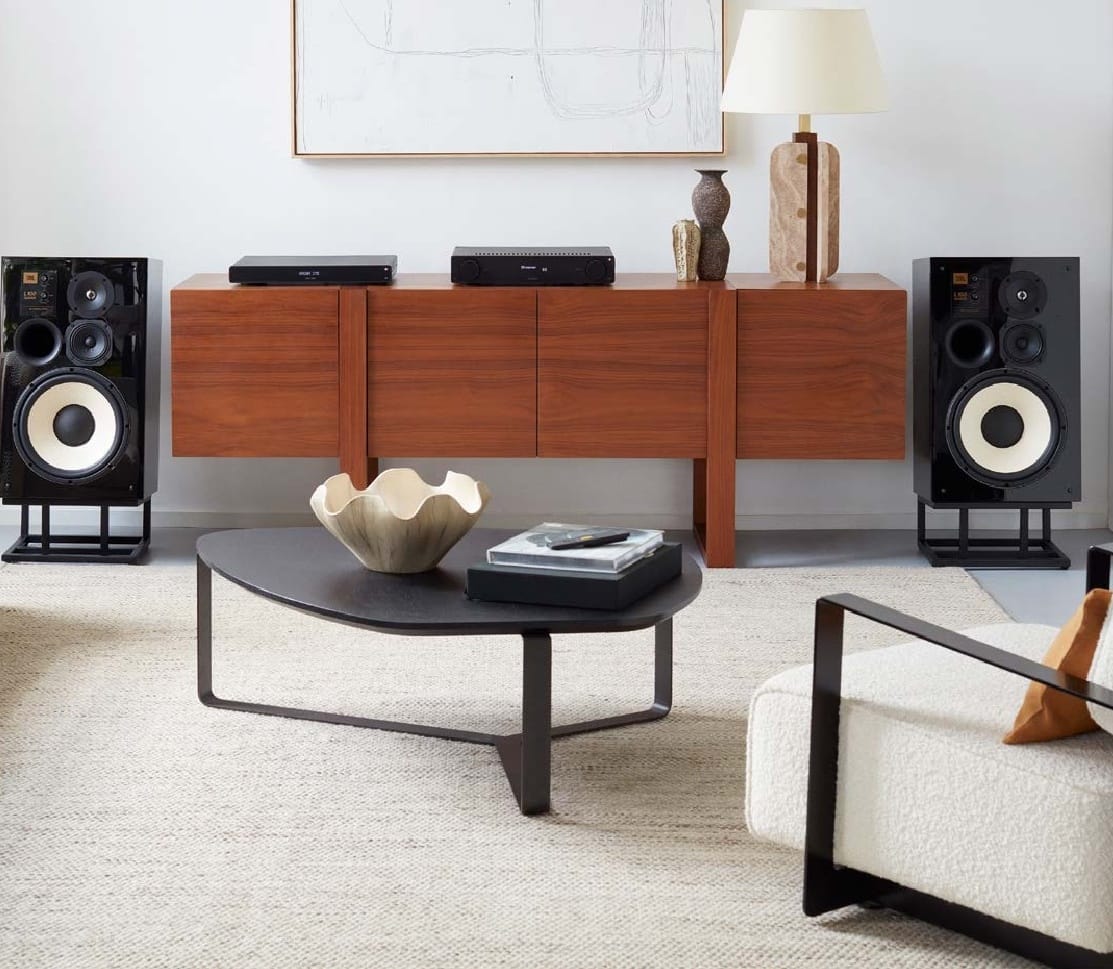
Specs
Type: Integrated amplifier/DAC
Technology: Transistor, Class G
Power: 2 x 100 watts at 8 ohms, 2 x 165 watts at 4 ohms
Inputs: Turntable (MM), 3 analog line, 1 optical digital, 1 coaxial digital, USB-C
Outputs: 1 pair of speakers (banana/screw), headphone output (3.5 mm mini-jack)
Resolution: 32 bit/192 kHz (optical/coaxial), 32 bit/352.8 kHz (USB-C), DSD 515 (USB-C)
Dimensions/Weight: 43.1 x 8.3 x 34.4 cm/12 kg
Website: arcam.co.uk
CONCLUSION
The Arcam Radia A25 is a completely sleek amplifier with no decoration – except for all the yellow decorations. Whether Arcam will succeed in reaching the target group of young, style-conscious, and affluent hi-fi enthusiasts they’re aiming for – and if that group even exists – remains to be seen.
In terms of sound, there are good reasons to explore the Arcam Radia A25, which has charming and extraordinary musical reproduction that makes you want to listen more. Even if you have to do without modern, digital luxuries like lossless music streaming and room correction.
When you purchase through links on our site, I may earn an affiliate commission. Here’s how it works.








